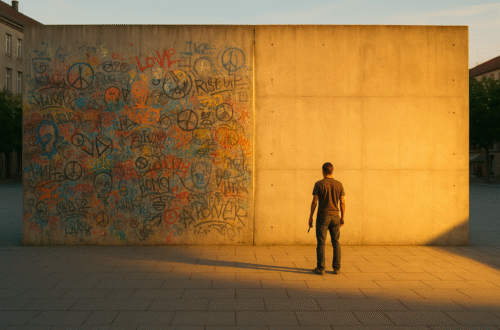There is a curious magic in the air on match day. Entire towns, cities even, seem to don a single colour, pubs swell with anticipation, and people who might otherwise never exchange a word become fast friends over a shared allegiance to “the lads.” One might mistake it all for mere diversion—a communal hobby, a harmless distraction from life’s more serious demands. And yet, when we peer a little more closely, we find in this fervent support for local sports teams a rather revealing portrait of our human longing for identity, meaning, and connection.
To support a team, especially the home team, is to participate in a ritual of belonging. It is, quite literally, to wear one’s heart on one’s sleeve, stitched into the club crest or emblazoned on the back of a jersey. According to Social Identity Theory, our group affiliations form a crucial part of our self-understanding. In simpler terms: tell me whom you cheer for, and I’ll tell you who you are. In Liverpool, Manchester, Newcastle, or indeed New York, Green Bay and Los Angeles, the team becomes the standard by which one signals, “This is my people. This is home.”
There is something noble and even beautiful in this. In a fragmented world, where neighbours are often strangers and the pace of life leaves little time for shared story, the local team offers a unifying narrative. The club’s triumphs are the town’s triumphs; its defeats, our shared sorrow. It is no small thing to sing the same song with thousands of others, to leap to one’s feet in synchrony, to feel however fleetingly, that we are not alone.
Indeed, community itself is built from such shared symbols. Cheering for the same team can be a prelude to more enduring bonds: friendships forged on the terraces, mentorships in youth leagues, even intergenerational wisdom passed down through the rituals of game-day preparation. Sport, at its best, can be a cathedral of common ground.
But—we must tread carefully. For the very instincts that bind us together can also, when left unexamined, carve deep and needless divisions. The line between “us” and “them” is perilously thin.
In-group versus out-group dynamics, as psychologists call them, can make devotion to one’s team a breeding ground for hostility towards the other. A bit of cheeky banter is one thing,but when tribalism hardens into disdain, mockery, or even violence, we are no longer in the realm of healthy rivalry. We are wandering into the ancient trap of exclusionary identity.
Consider the fans who refuse to befriend someone simply because they support a different club. Or the child who is mocked at school for wearing the “wrong” shirt. Or worse, the simmering aggression that spills from stadium to street, all under the banner of loyalty. In such cases, the team is no longer a symbol of community but a weapon of division.
It is worth asking ourselves: is the team badge on our chest a banner under which we gather—or a wall behind which we hide?
True community is never built on exclusion. It is built on shared joy, mutual respect, and the curious ability to see even our rivals as fellow humans who, like us, long for connection, meaning, and a good match on a Saturday afternoon.
So by all means, support your team. Paint your face, sing the chants, pass down the season tickets to your children. But do so with open eyes and a generous heart. Remember that behind every rival jersey is another person caught up in the same longing for home, for pride, and for belonging.
And if ever you find yourself jeering more than cheering, perhaps it’s time to ask not what the team says about who you are—but what it could say about who you might become.





